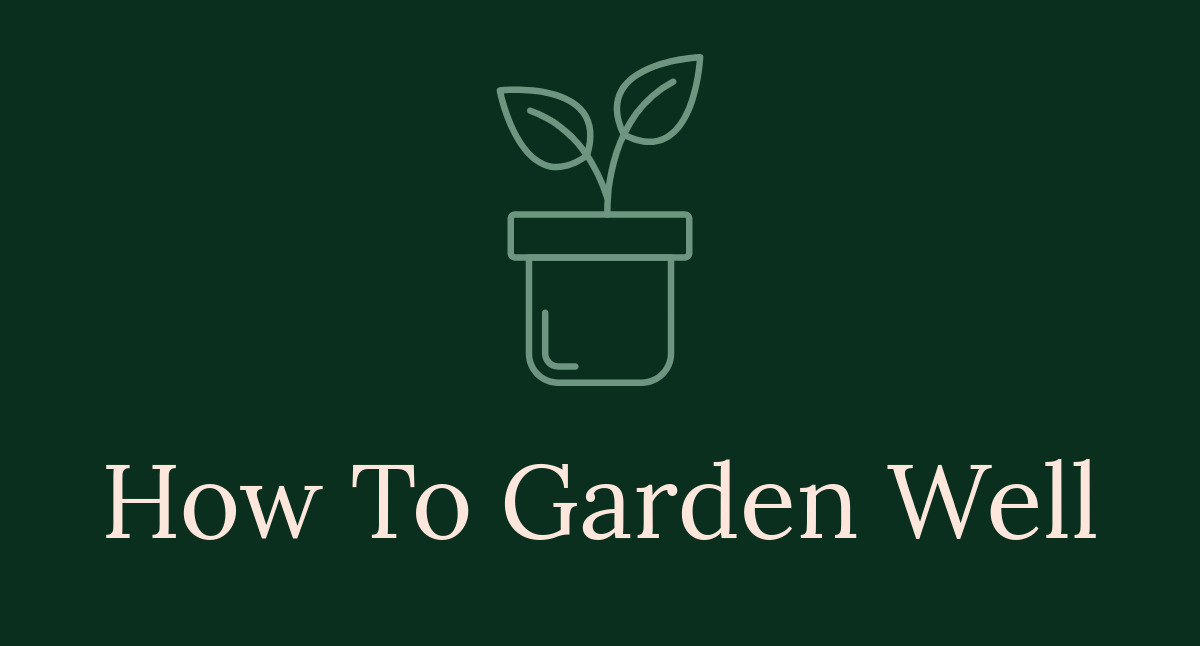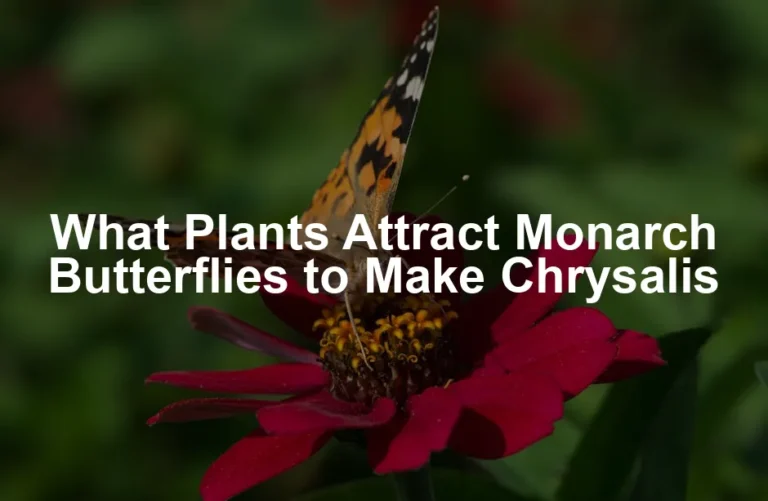
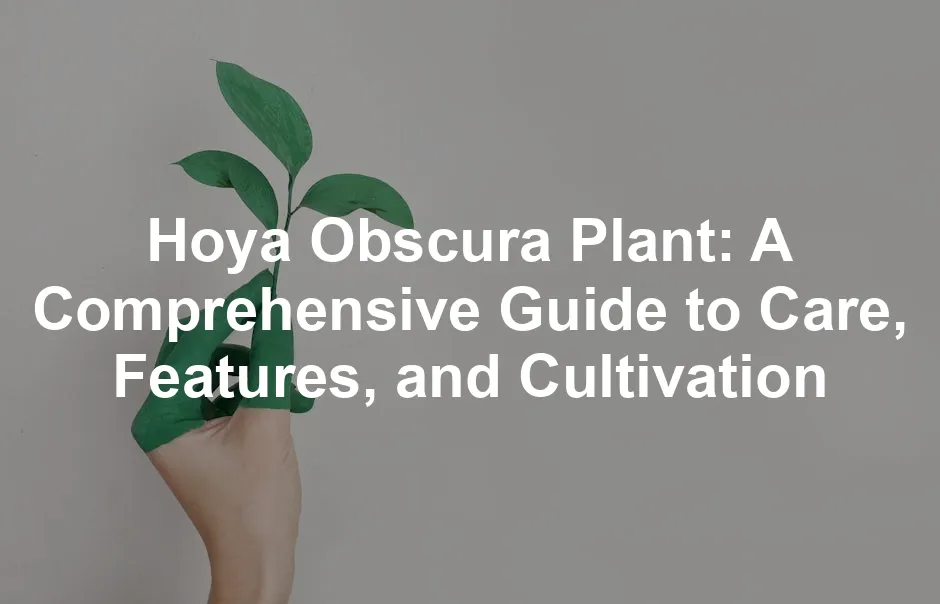
Hoya Obscura Plant: A Comprehensive Guide to Care, Features, and Cultivation
Introduction
The Hoya obscura plant is a delightful addition to any indoor garden. With its unique, waxy leaves and charming flowers, it’s no wonder plant enthusiasts adore it. Native to the lush forests of the Philippines and Borneo, this species offers both ornamental beauty and practical benefits, making it a sought-after choice for collectors.
To ensure your Hoya obscura thrives, consider using Miracle-Gro Indoor Plant Food. This specially formulated fertilizer provides essential nutrients that can help your plant flourish. Plus, it’s easy to use and works wonders for indoor plants!
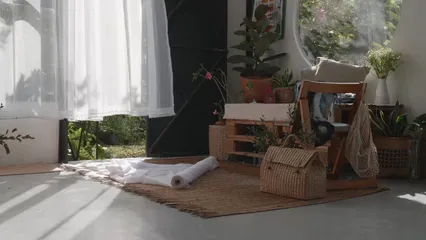
Summary and Overview
Hoya obscura belongs to the Apocynaceae family, within the Hoya genus. This plant is known for its climbing habit and can reach impressive lengths of up to 2 meters. Its thick, elliptic leaves can turn a beautiful reddish hue in bright sunlight. The plant produces clusters of fragrant flowers, typically pink or cream, that bloom during specific conditions. While this species is relatively easy to care for, it does present some challenges, particularly in terms of watering and light requirements. Understanding its needs is crucial for successful cultivation.
To make sure you have the right growing medium, opt for an Organic Potting Mix. It’s perfect for ensuring proper drainage and aeration, giving your Hoya obscura the best chance to thrive.
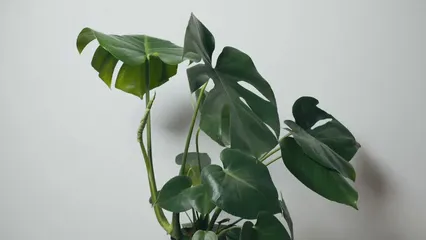
Foliage and Flower Characteristics
Leaf Structure and Coloration
The leaves of Hoya obscura showcase a lovely elliptic to obovate shape. Typically, they measure around 4 to 7 cm long and 3 to 4 cm wide. Their thick texture gives them a luxurious feel, enhanced by prominent pinnate venation. Depending on the amount of sunlight, these leaves can transform dramatically. When exposed to bright light, they may take on a beautiful reddish hue, adding visual interest to your plant collection. In lower light conditions, they maintain a rich green tone. Proper leaf care can help maximize these stunning color changes, ensuring your plant looks vibrant and healthy.
Flowering Patterns and Fragrance
Hoya obscura produces delightful clusters of flowers, typically in shades of pink or cream. Each cluster can contain up to 20-30 individual blooms, creating a stunning display. One of the plant’s most intriguing features is its sweet, spicy fragrance, which becomes more pronounced at night. This unique scent adds a special charm to your indoor space. The blooming season usually occurs after rain, but specific conditions, such as warmth and humidity, can stimulate flowering. By providing your Hoya obscura with the right environment, you can enjoy its enchanting flowers and their captivating aroma throughout the year.
To keep your plants hydrated and healthy, consider investing in a stylish Plant Watering Can. Not only will it help you water your plants efficiently, but it can also add a touch of décor to your gardening routine!
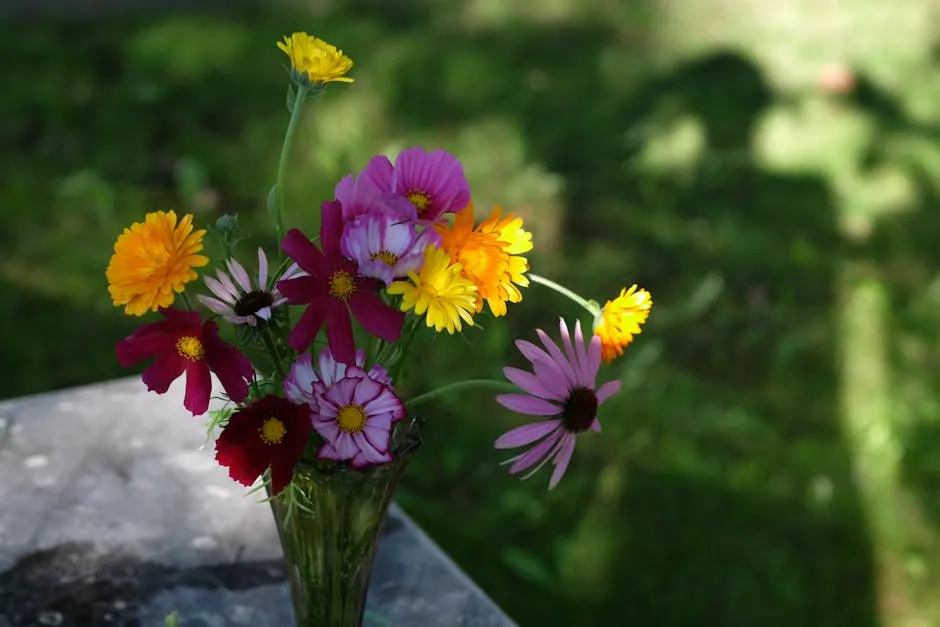
Cultivation and Care
Light and Water Requirements
Hoya obscura thrives in bright, indirect light, mimicking its native forest habitat. Too much direct sunlight can scorch its leaves, while insufficient light may hinder growth. Aim for a spot where it can soak up filtered light for optimal health. When it comes to watering, this plant prefers a moderate approach. Allow the soil to dry out slightly between waterings to prevent root rot. Typically, watering every 1-2 weeks works well, but adjust based on your home’s humidity levels. Using well-draining soil ensures excess water escapes, promoting healthy root growth. With the right light and watering routine, your Hoya obscura will flourish beautifully.
Soil and Fertilization Needs
For Hoya obscura, a well-draining potting mix is essential. A blend of potting soil, perlite for potting soil, and orchid bark works wonders. This mixture allows for air circulation and drainage, preventing root rot. Make sure the pot has drainage holes to ensure excess water escapes.
When it comes to nutrition, Hoya obscura benefits from regular fertilization. Use a balanced liquid fertilizer every four to six weeks during the growing season. Look for a fertilizer that’s high in potassium to promote blooming. During the winter months, cut back on feeding, as the plant enters a dormant phase. Always follow the recommended dosage on the fertilizer label to avoid over-fertilization, which can harm your plant.
For those looking for a more convenient fertilization method, consider using Plant Fertilizer Spikes. They provide a slow release of nutrients and simplify your feeding routine. You can enjoy a thriving Hoya obscura without the hassle!
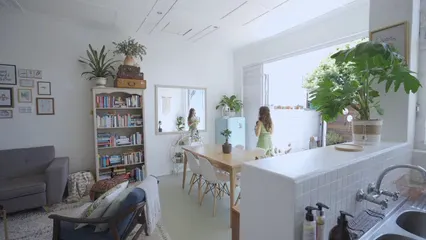
Propagation Techniques
Propagating Hoya obscura is simple and rewarding. You can use stem cuttings or seeds for this process. For cuttings, select healthy stems with a few leaves. Cut just below a node, as this is where roots will develop. Place the cutting in a glass of water or directly in a well-draining potting mix. Ensure it receives bright, indirect light to encourage root growth.
If you choose seeds, keep in mind they require more patience and care. Use a seed-starting mix and maintain warm, humid conditions. Regardless of the method, monitor moisture levels closely. Avoid overwatering, which can lead to rot. With these techniques, you’ll soon have new plants to enjoy or share with friends!
To keep your propagation efforts organized, consider using Plant Labels for Garden. They’re a great way to keep track of different cuttings and their progress!

Landscaping Uses and Benefits
Aesthetic Appeal in Gardens
Hoya obscura adds a unique charm to landscaping and garden design. Its trailing vines are perfect for container gardening ideas for small spaces and look stunning in hanging baskets. This plant can create a beautiful vertical element in your garden, making it an eye-catching feature.
Using Hoya obscura in container gardening can enhance the aesthetic appeal of your space. Explore container gardening ideas for small spaces
Consider placing Hoya obscura near a trellis for climbing plants to allow its vines to climb. When used in mixed plant arrangements, it complements other foliage beautifully. The fragrant flowers also attract pollinators, enhancing your garden’s ecosystem. Whether indoors or outdoors, this plant brings a touch of elegance and liveliness to any space.
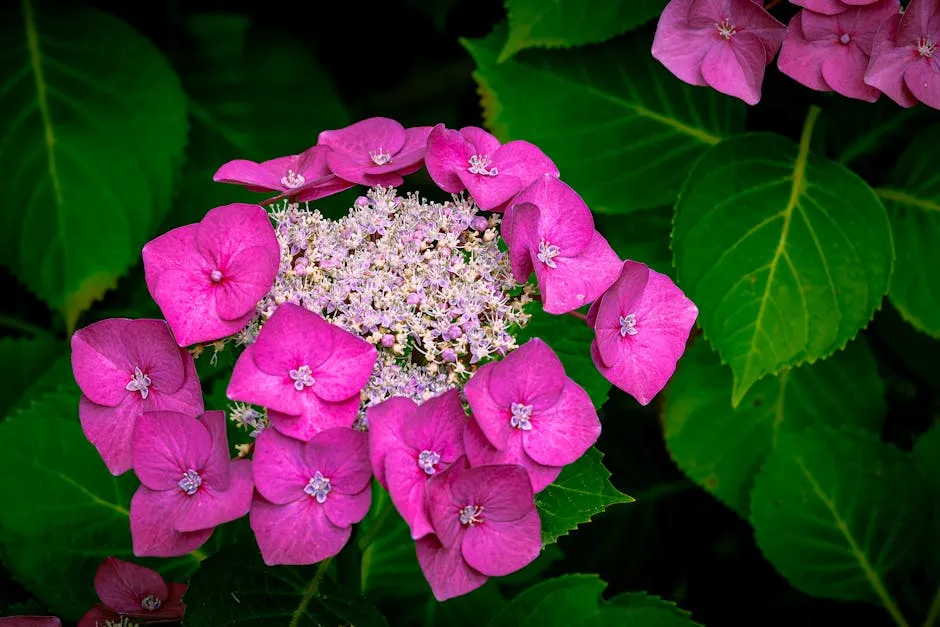
Potential Risks and Toxicity
While Hoya obscura is a beautiful plant, it’s important to be aware of its potential risks. This plant contains milky sap, which can be toxic if ingested. It’s particularly harmful to pets and children, so keep it out of reach. Symptoms of poisoning may include vomiting, diarrhea, or irritation.
When handling Hoya obscura, wear gardening gloves to avoid contact with the sap. Always wash your hands afterward to prevent any accidental ingestion. If you have pets, consider placing the plant on a high shelf or in a room they cannot access.
Educating your family about the plant’s toxicity is also crucial. By taking these precautions, you can enjoy your Hoya obscura while keeping your loved ones safe. Remember, plant safety is key to a happy home!

Anecdotes from Growers
Many Hoya obscura growers have shared their experiences, highlighting both the joys and challenges of cultivation. One grower, for instance, struggled with root rot initially. They learned that overwatering was the culprit, leading to a shift in their watering routine.
Another enthusiast found success by using coconut coir fiber for propagation. Their cutting rooted quickly and even produced flowers early! This shows how experimenting with different methods can yield positive results.
Community members frequently discuss the variability of Hoya obscura. Some clones are easier to grow than others. By sharing these insights, growers help one another navigate challenges and celebrate successes, creating a supportive environment for all Hoya fans.
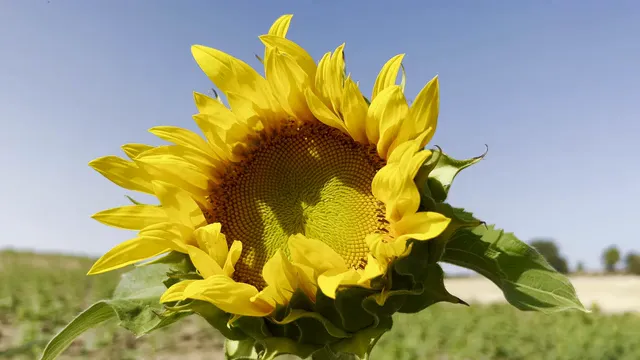
Conclusion
In this guide, we’ve covered the fascinating Hoya obscura plant. From its striking features to care tips, it’s clear why this plant attracts both novice and experienced enthusiasts. Its unique foliage and delightful fragrance make it a standout choice. Growing Hoya obscura is a rewarding experience, offering beauty and a sense of accomplishment. Whether you’re adding to your collection or starting fresh, consider exploring this delightful plant. You won’t regret it!
As you embark on your gardening journey, consider adding an Indoor Garden Kit to your collection. It’s a fun way to grow your own herbs and veggies right in your kitchen!

FAQs
What is Hoya obscura?
Hoya obscura is a member of the Apocynaceae family. This unique plant is native to the Philippines and Borneo. Known for its beautiful leaves and fragrant flowers, it thrives in warm, humid environments.
How do I care for a Hoya obscura plant?
Hoya obscura loves bright, indirect light. Water it when the soil dries out slightly, typically every 1-2 weeks. A well-draining potting mix with perlite is ideal for its roots.
Is Hoya obscura toxic to pets?
Yes, Hoya obscura contains milky sap that can be toxic if ingested. Keep it out of reach of pets and children. If ingested, symptoms may include vomiting or irritation.
How do I propagate Hoya obscura successfully?
You can propagate Hoya obscura using stem cuttings or seeds. For cuttings, choose healthy stems and place them in water or soil. Ensure they receive bright, indirect light for best results.
What are the common pests that affect Hoya obscura?
Common pests include mealybugs and spider mites. To manage them, inspect your plant regularly. You can wipe leaves with soapy water or use insecticidal soap for treatment.
Please let us know what you think about our content by leaving a comment down below!
Thank you for reading till here 🙂
All images from Pexels
